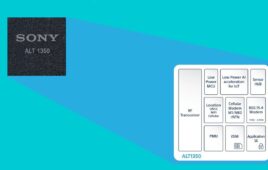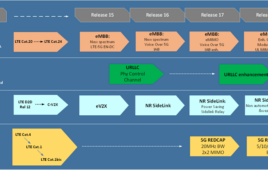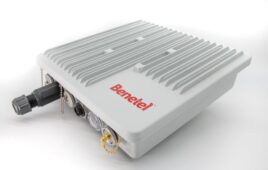When Nokia and Microsoft announced their strategic partnership last February, the first Nokia device based on Windows Phone 7, Microsoft’s mobile OS, seemed like a fairytale.
Well, the dragon was slain today as Nokia announced a pair of WP7-based smartphones, the Lumia 710 and Lumia 800, during the opening keynote at the company’s annual Nokia World conference. The jury is still out on whether these new devices, armed as they are with Microsoft’s OS, will bring peace back to the land of Nokia.
“Eight months ago, we shared our new strategy and today we are demonstrating clear progress of this strategy in action,” said Stephen Elop, Nokia’s president and CEO, in a statement. “We’re driving innovation throughout our entire portfolio, from new smartphone experiences to ever smarter mobile phones.
Both are capable smartphones in their own right and specs appear to come close to matching competitive offerings. The Nokia Lumia 800 features a 3.7-inch AMOLED ClearBlack curved display, 1.4 GHz processor, 8-megapixel camera with Carl Zeiss lens, 16GB of internal memory, 512 MB RAM and 1450 mAh battery. The Lumia 800 does not include near field communications (NFC).
The Lumia 710 is just a notch down from the 800 and features a 3.7-inch display, 1.4 GHz processor, 5-megapixel camera, 512 MB RAM and 8 GB of internal storage, with no SD card for memory expansion. Nokia apparently hopes to compensate for limited internal storage by including 25GB of complimentary storage on SkyDrive in the cloud. The SkyDrive feature is available with both of the new WP7 phones.
The Lumia 800 will sell for 420 EUR ($584), and the Lumia 710 will sell for 420 EUR ($584). The 800 is now available in select countries for pre-order online and is scheduled to roll out across France, Germany, Italy, the Netherlands, Spain and the U.K. in November. It is scheduled to be available in Hong Kong, India, Russia, Singapore and Taiwan before the end of the year, and in further markets in early 2012.
The Nokia Lumia 710 is scheduled to be available first in Hong Kong, India, Russia, Singapore and Taiwan toward the end of the year alongside the Nokia Lumia 800, before becoming available in further markets in early 2012.
Nokia also announced its plans to introduce a portfolio of products into the U.S. in early 2012 and into mainland China in the first half of 2012. In addition to the existing products, which include coverage for WCDMA and HSPA, Nokia also plans LTE and CDMA products to address specific local market requirements.
In conjunction with the release of new smartphones, Nokia stayed true to its mass market root with the launch of four new texting phones, the Nokia Asha 300, Asha 303, Asha 200 and Asha 201. The company says the phones are aimed at blurring “the line between smartphones and feature phones,” offering qwerty and touch screen experiences.
Michael Gartenberg, research director for Gartner, says today represents a huge milestone for Nokia. “They said they were going to execute on Windows Phone 7, they did and they were also able to bring devices to market this year, something they hadn’t committed to,” he said.
Gartenberg said Nokia’s decision to delay a U.S. launch is probably prudent. “They’re only going to have one chance at re-entering the U.S market,” he said. “Starting off in Europe gives them time to recover and play to their strengths where they’ve been most successful.”
While Gartenberg said Nokia’s latest play in the smartphone market is far from a done deal, he offers that the phones look good, the marketing appears to be on target, but most importantly the company showed that it can still do what it says it’s going to do.
“This is a big win for Elop and his team,” Gartenberg said. “But it’s also good news for Microsoft. It shows that their partnership with Nokia has paid off.”
Check the video below for a look at the Lumia 800:




